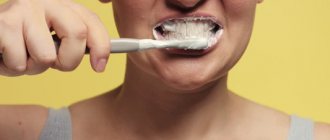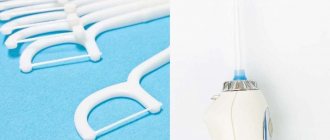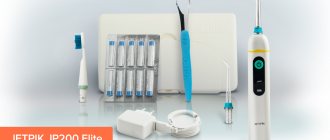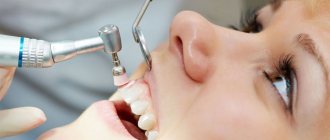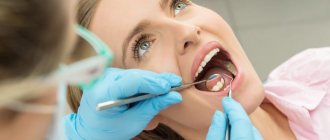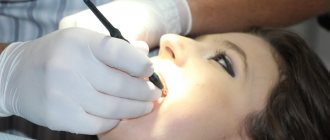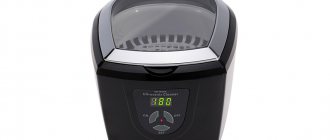A scaler is a device that dentists need to perform complex procedures. The device is also used by specialists in other fields: therapists, surgeons, orthodontists. A scaler is needed, first of all, to remove hard deposits (tartar) from the enamel surface. The equipment is also used for teeth polishing.
With the help of the device, it became possible to clean orthodontic structures - crowns and bridges. Due to this, it is possible to increase the service life of products. An ultrasonic scaler is used to irrigate the oral cavity with various antiseptic solutions to prevent dental diseases. Features of using the device and its varieties will be discussed in the article.
Description
Skylers can be integrated into stationary equipment and connected to other dental instruments.
Can work in two modes: water and normal. Using attachments, you can polish enamel and prepare crowns and orthodontic implants for installation. Skylers are easy to use, intuitive and ergonomic. All hoses and nozzles are easily disconnected and treated with solutions.
Dental scaler is used for:
- eliminating plaque on enamel and gums;
- polishing the enamel after cleaning;
- preparing teeth for filling;
- cleansing the oral cavity from microorganisms;
- cleaning orthodontic structures;
- diagnostics of oral health.
The device operates using oscillatory vibrations without creating discomfort for the patient. The scaler can be combined with any type of dental accessories. All models are equipped with soft ergonomic tips.
The dental scaler gives a certain sound signal if it senses dental plaque in inaccessible places.
Types of scalers
- built-in;
- autonomous.
Autonomous equipment does not require special installation. It operates independently of the fixed dental device. This differs from a built-in scaler, which requires special installation.
Advantages of stand-alone equipment over built-in equipment:
- does not require dismantling when replacing stationary equipment;
- allows the use of additional dental solutions;
- is characterized by mobility and independence from the place of treatment;
- can be combined with any stationary equipment.
However, portable ones have their drawbacks. They require careful observance of storage conditions, and before use they require adjustment.
Skylers without a water mode are of little use for dental offices.
Depending on the technology used, scalers are:
- with magnetostrictive drive;
- piezoceramic;
- air driven;
- with and without backlight.
The most common are air driven scalers. Air-driven devices are cheaper than piezoceramic devices, and the latter are distinguished by high power.
In addition to cleaning enamel and dental pockets from plaque, scalers are used in implantology. With the help of attachments, dentures and implants can be well prepared for installation. Scalers also prepare dental canals for subsequent filling.
Advantages and disadvantages
A dental scaler has the following advantages over conventional dental equipment:
- careful treatment of soft gum tissues in case of accidental touch;
- does not cause mechanical damage to orthodontic structures during cleaning;
- increases the accuracy of medical manipulations;
- independently coordinate the pressure power when working with dental plaque: increase or decrease the load on the tissue.
Flaws:
- pain when clearing deposits in sensitive patients (local anesthesia required);
- damage to gum tissue is possible when cleaning very hard deposits;
- care when cleaning deposits in patients with implants.
There are also contraindications to the use of skylers to cleanse enamel:
- acute heart failure;
- allergy to solutions;
- stationary implants;
- bronchial asthma, breathing problems;
- the presence of foci of inflammation;
- reduced immunity;
- Small children.
The price of scalers depends on the number of functions performed and the country of production.
How long does the effect of the procedure last and how often should it be performed?
Patients and specialists note that the maximum duration of the effect after ultrasound treatment lasts about a year. The same time is enough to restore the enamel layer. Therefore, after a year the procedure should be carried out again. At the same time, doctors recommend that patients with a tendency to pathological plaque mineralization perform enamel cleansing with ultrasound every 6 months. You can determine the required frequency of dental hygiene yourself. If, immediately after regular daily brushing, your teeth look something like this photo on the left, then the need is ripe and it’s time to make an appointment with the dentist.
Principle of operation
The device is developed based on ultrasonic stimulation of tissue, which destroys solid formations. The dentist coordinates the frequency of ultrasound vibrations, selecting the optimal mode. During operation, a liquid is constantly supplied that washes the oral cavity, removes separated plaque and anesthetizes the patient.
It consists of a main unit with a fluid supply coordinator, a power supply, a power pedal, a removable hose with a tip and fluid supply functionality.
The scaler tip easily integrates various attachments and other dental instruments.
Stages of cleaning plaque with a skyler:
- The nozzle of the device is inserted into the oral cavity, and ultrasonic waves are applied through it. During operation, liquid is constantly supplied to clean the removed deposits. The liquid is removed from the oral cavity using a saliva ejector. Since the nozzle glides over the surface of the enamel, this protects soft and bone tissues from possible injury.
- After removing plaque, the enamel is polished. This is necessary to remove remaining pieces of hard deposits and clean the surface from uneven surfaces. For polishing, abrasives can be used, as well as the addition of bleaches.
- After this, fluoridation of the teeth is carried out. This is necessary to strengthen thinned enamel after removing hard deposits and enriching the enamel with mineral elements.
What is good about an ultrasonic brush?
Ultrasonic brushes have a number of advantages:
- They destroy bacterial chains, preventing the formation of plaque.
- Copes with both soft and pigmented plaque.
- Ultrasound penetrates into hard-to-reach places, so an ultrasonic toothbrush can clean interdental spaces and other difficult areas well.
- Promotes better penetration of the medicinal components of toothpaste deep into the tooth.
- It works absolutely silently.
Review of scalers
Models from different manufacturers are available on the market:
- Japanese NCK;
- Swiss EMS;
- German VDW GmBh;
- Chinese Pragmatic and Woodpecker;
- French ACTEON Group.
Woodpecker
Devices from a Chinese manufacturer are distinguished by their low price and great operating comfort.
Three types of nozzles are used for work:
- for oral hygiene, removal of plaque and stone;
- for removing hard deposits and treating carious surfaces;
- for cleaning periodontal pockets from deposits.
Model DTE-D7 LED
This is a self-contained model with optics, equipped with a diaphragm pump to create high pressure. The scaler provides different types of dental procedures:
- removing plaque;
- periodontal therapy;
- endodontic therapy.
The kit includes two fluid reservoirs, 8 nozzles and holders for them. During treatment, solutions of sodium hypochlorite and chlorhexidine can be used.
The model features an ergonomic design, an autonomous water supply system, and autoclavable nozzles with removable tips (with LED backlight). It has compact volumes, light weight, digital control, and a pedal.
Model DTE-D6 LED
A self-contained device made in China, it is lightweight and has an ergonomic design. Six attachments are used to remove plaque from the frontal areas of the crown, as well as to prepare the dental canal of the front teeth for filling. The tip is equipped with LED lighting, there is a reservoir for dental solutions with an autonomous liquid supply.
The kit includes an endochuck with which you can carry out endotherapy. The device is not much inferior to its European analogues, and in some ways it is superior to them. The scaler is easy to clean and disinfect.
NSK Varios 970 LUX LED
This is a self-contained scaler made in Japan, with LED backlighting and optics. The set includes two reservoirs for liquids, three nozzles, and an autonomous water supply. The nozzle tip is equipped with optics and two LEDs.
Piezon 250 LED
The Swiss multifunctional scaler model is characterized by high quality of manipulations and a low noise threshold.
Performed operations:
- removal of dental plaque;
- endodontic manipulations;
- periodontal therapy;
- work with implants.
ULTRA VDW VDW GmBh
This German-made model is designed for endodontic therapy, but also copes with the removal of plaque and tartar. Despite the absence of optics and illumination, the device performs many different manipulations and ensures high quality of treatment.
Built-in skyler DL 920
A distinctive feature is automatic water supply and lighting. The functionality of the device is expanded by the possibility of using numerous attachments. The light ergonomic shape of the scaler does not have a significant impact on the hand, so you can work with the device for a long time. The touch control unit fully controls the operating mode, facilitating manipulations with the patient.
Allows you to eliminate small plaque, hard deposits, deposits stained by drinks and tobacco, and clean small periodontal pockets.
Advantages and disadvantages of ultrasonic cleaning
Advantages:
- Possibility of removing plaque even in interdental spaces
- Elimination of dark pigmentation from tobacco and food colorings
- Removing deposits from periodontal pockets
- Sterilization of the tooth surface from pathogenic microflora
- Lightening enamel to a natural shade
- Prevention of caries
- No risk of injury to teeth and gums
- Eliminates unpleasant odor caused by deposits
Flaws:
- Discomfort when treating sensitive areas (periodontal pockets)
- Increased sensitivity of enamel to hot and cold stimuli for several days
- A large number of contraindications
What to choose?
The problem of choice depends on functionality, quality and price. Let's look at different types of skylers.
Air driven
These devices are the cheapest, but are not very powerful. Installing the skyler is not difficult: the device is mounted on the air hose of a permanent installation.
Built-in
The installation consists of integrating the electrical unit into the doctor's stationary unit. Built-in devices are distinguished by the highest power and are easily placed in a free slot in a stationary installation. Built-in appliances have a large selection of attachments.
With connection to a water source
These models are considered more comfortable and versatile to use than built-in ones. The set of functions depends on the manufacturer; you need to carefully study the instructions.
Autonomous
Ease of transportation from office to office. Removable hoses are easy to detach and wash. Skylers are equipped with an automated control system for mains voltage, supply of solutions, connection of nozzles and hoses, and operating mode. At the slightest problem, the sound warning system turns on; in the event of a breakdown, the device automatically turns off.
Nozzles:
- for removing dental plaque;
- for periodontal curettage;
- for surgical procedures;
- for the treatment of carious lesions;
- for endodontic therapy (endochucks).
When purchasing, you need to open the package and make sure that all components are in place.
Oral care after ultrasonic cleaning
Dentists recommend adhering to the following tips:
- In the first 3–4 days after the procedure, teeth should be brushed after each meal and at night. In this case, you should not use abrasive toothpastes, as this can irreversibly damage the enamel layer. You should also change the old brush, as pathogenic bacteria remain on it, and the enamel is overly vulnerable during this period;
- reduce in your diet foods and drinks containing natural and artificial colors (tea, coffee, berries, etc.). This rule should be followed at least in the first week after the procedure;
- increase the number of foods that are sources of calcium in the menu;
- avoid sudden temperature changes, for example, after hot tea you should not eat ice cream;
- in case of possible injury to the mucous membrane of the gums, they should be treated with antiseptic healing ointments, rinsed with a warm chamomile decoction;
- If inflammation occurs, consult your doctor immediately.
The dental network offers ultrasonic teeth cleaning services. Our clinic offers family and savings discounts. Our doctors are highly qualified and continue to improve their skills in leading Russian and European dental clinics. The level of our medical services meets international standards.
Branches of our orthodontic center are located in Moscow within walking distance from the metro:
- Art. Alekseevskaya (VDNKh district, etc. Mira), address: st. 3rd Mytishchiskaya house 3, building 2;
- Art. Shelepikha, address: Shelepikhinskaya embankment, address: building 34, building 1.
We will help keep your teeth healthy! We are waiting for you in our clinic every day without breaks and weekends.
Exploitation
In order for the equipment to serve for a long time, careful and competent treatment is necessary.
- Keep the device clean.
- Before each use, the nozzle and key must be sterilized.
- Do not install the attachment while the pedal is on (remove your foot from it).
- Check to see if the liquid is spraying through the nozzle.
- A damaged nozzle must be replaced with a new one.
- It is unacceptable to sharpen a worn-out attachment; it must be replaced.
- When screwing in the nozzle, do not apply any force.
- Control the fluid supply and do not allow it to accumulate between the hose and the nozzle.
- The hose must not be pulled during operation.
- After work, you must first turn off the power and then unplug it from the outlet.
- When attaching an attachment from another manufacturer, make sure that the threads are correct.
Water should flow into the handpiece without interruption, immediately after pressing the foot pedal. If this does not happen, check the attachment of the tip to the hose.
Skyler components must not be boiled in water, sterilized in alcohol or iodine solution, or dried in an oven or microwave. To sterilize parts, you must comply with the requirements specified in the instructions. This will ensure long life of the device.
Various problems may arise when operating devices. They are mainly caused by improper fastening of tips or other parts. The cord may also be damaged or the pedal may be loose. For other problems, please contact your dealer.
Do not install the equipment near flammable objects. Be careful when transporting. It is unacceptable for the skyler to get wet or to be exposed to the directed rays of the sun for a long time.
The autonomous Skyler must be stored in a dry, ventilated room. If you do not use the equipment for a long time, once a month you need to pass water through it and plug it into the network. 5-10 minutes are enough for this.
Warranty service for skylers is provided for a year.
Bottom line
Modern ultrasonic scalers are the latest generation of dental devices that can be used to analyze and monitor the condition of tooth enamel and orthodontic implants. Smart devices themselves detect the accumulation of plaque and send a signal. Using a scaler, you can carry out a high-quality and gentle procedure for removing tartar. The scaler is also used as an irrigator to irrigate the oral cavity during and after treatment.
There are two types of skyler models: stand-alone and built-in. For stationary offices, built-in ones are chosen. However, stand-alone scalers can also be used in your office. They are cheaper and do not require installation.
Sources used:
- Chilikin, V.N. Latest technologies in aesthetic dentistry / V.N. Chilikin. — M.: MEDpress-inform
- Ronkin, Konstantin Modern methods of teeth whitening / Konstantin Ronkin. - M.: Dental Kaleidoscope LP, 2011.
- Official website of the Russian Dental Association
Indications and contraindications for
Indications:
- Pigmentation of tooth enamel
- Bad breath
- Bleeding gums
- Dentures (for correct selection of denture color)
- Before installing braces
- Before performing chemical bleaching of the enamel layer
Contraindications:
- Asthma, bronchitis
- Nasal congestion
- Severe cardiovascular disorders
- Installed pacemaker
- Any disease in the acute stage
- Epilepsy
- Serious neurological pathologies
- Age up to 18 years
- Presence of implants, crowns, “bridges”
- Purulent lesions of oral tissues

